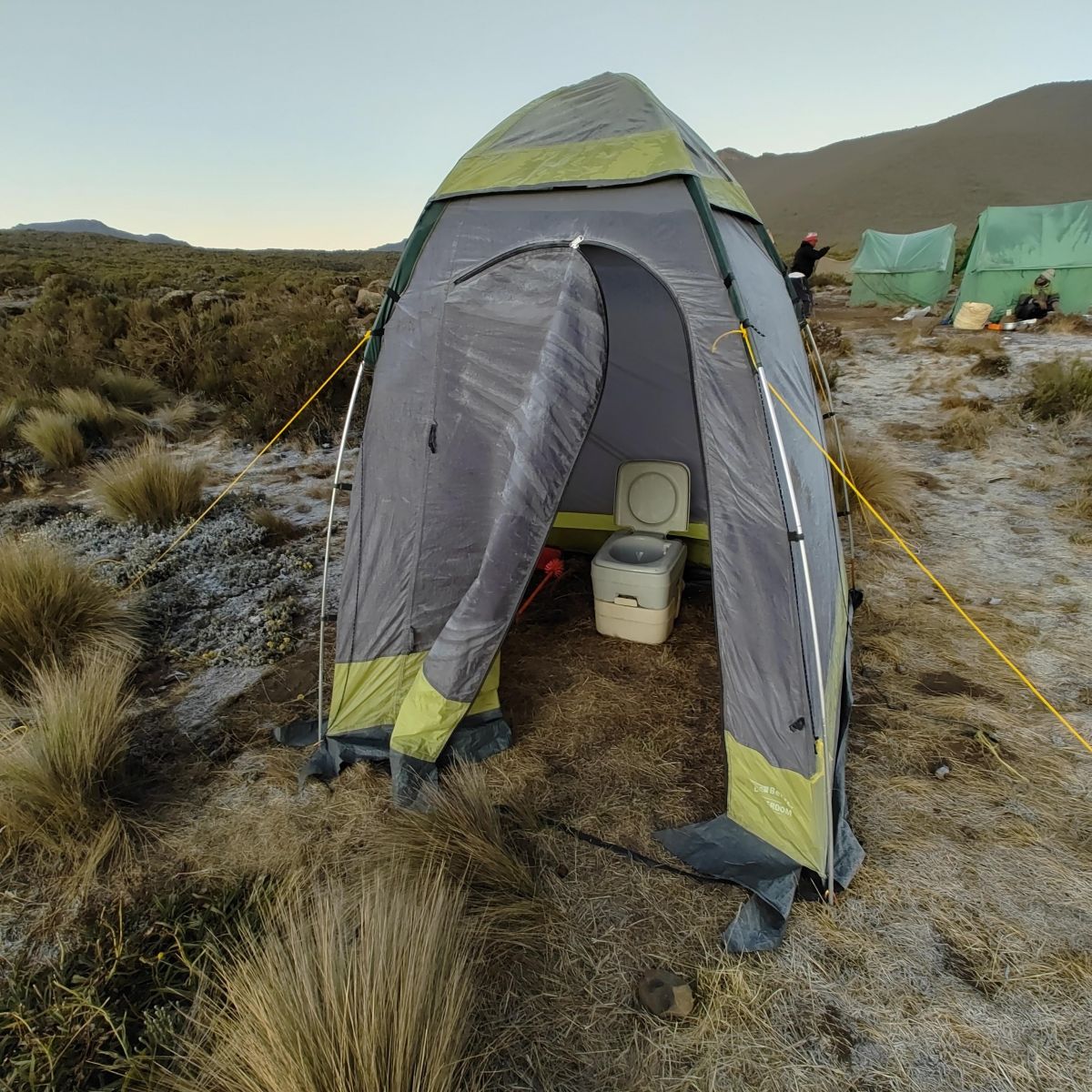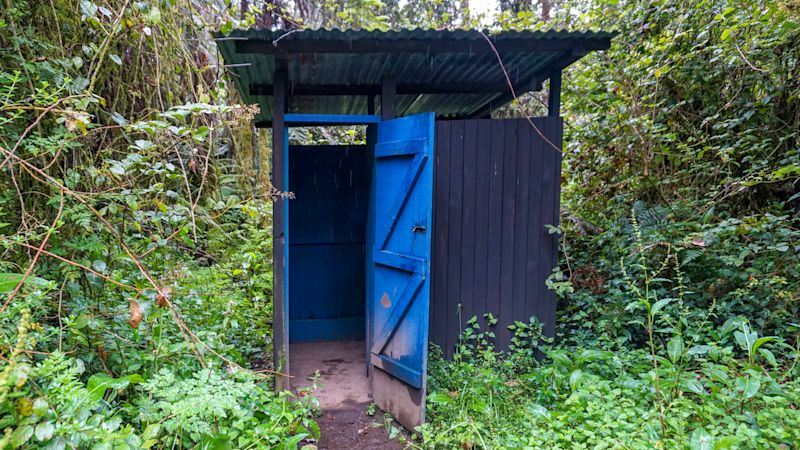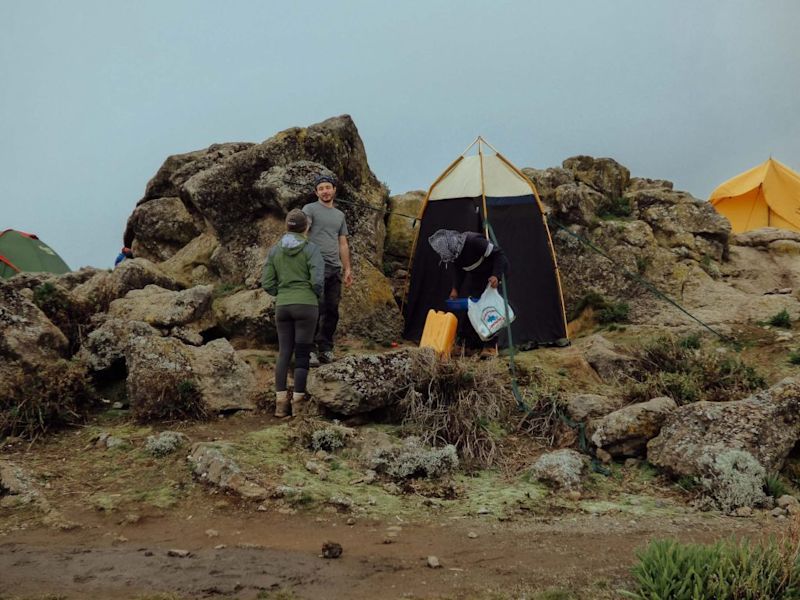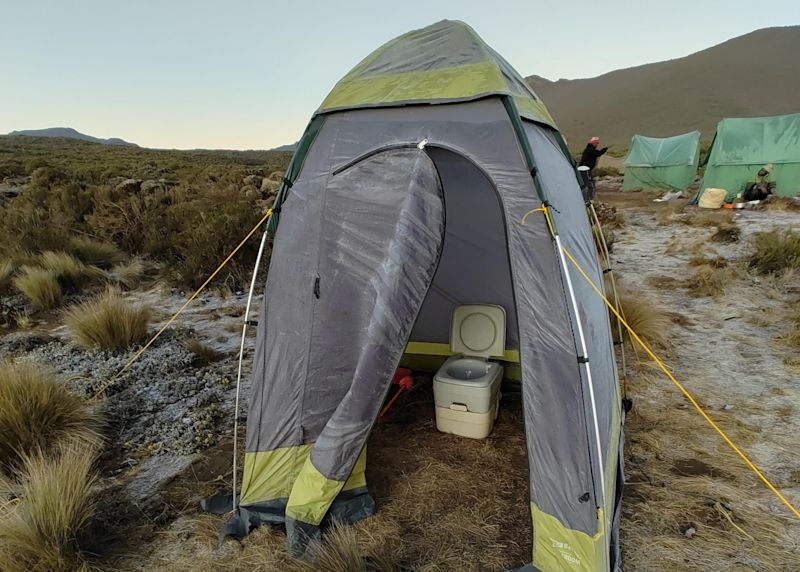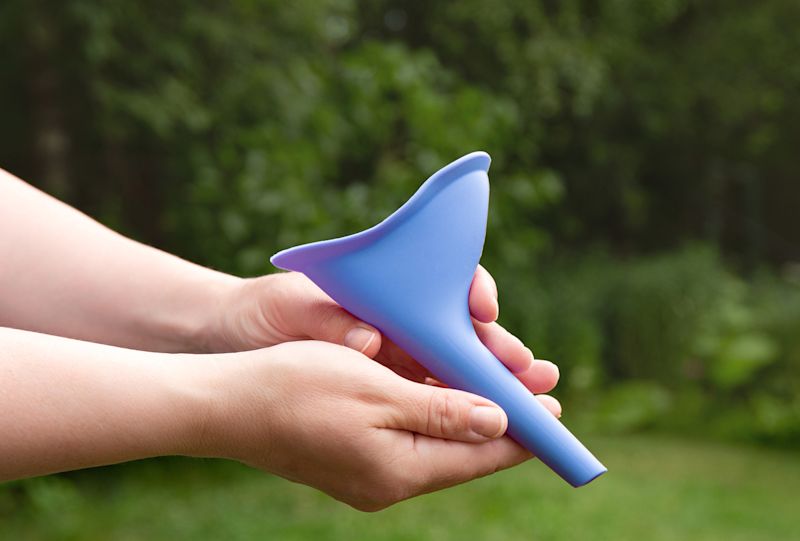1. Public toilets
When in camp, there are two types of toilets: public and private. The public toilets are long drops that are open to anyone. They're usually used by mountain crews and by climbers travelling with budget tour operators.
A public toilet in the forested section of Kilimanjaro
Understandably, the public toilets aren't as clean as the private toilets. And being long drops, they can get really smelly.
We advise that you check on the toilet situation with any potential Kilimanjaro tour operator before booking with them. Without putting too fine a point on it, you don't want to use the public toilets on your Kilimanjaro climb!
2. Private toilets
As we discuss in Why prices differ so much between Kilimanjaro tour operators, luxury and mid-range tour operators provide their clients with certain extras like private toilets housed in toilet tents on the mountain. Unlike the public toilets, which are long drops, private toilets are chemical toilets with seats.
Many tour operators provide private toilets in little tents like this one
Follow Alice's toilet tents
If you climb Kilimanjaro with Follow Alice, we provide a portable chemical toilet (inside of a little tent) at every campsite.
More specifically, we provide one portable toilet for every eight climbers. So if there are 10 climbers in a group, for instance, we'll carry and set up two little tents, each with its own portable loo.
A Follow Alice portable toilet
We also assign a porter on each climb to regularly service the toilet, so it always stays in good, clean-smelling nick for you.
If you'd like a private toilet tent for just you (or you and your partner), this can be arranged, but please note that you'll have to bankroll the additional porter needed to carry it. In other words, it's going to be expensive.
Right, let's now talk about needing the loo when not at camp ...
3. Peeing when hiking as a woman
For women, it's a good idea to pack a urinating device like a Shewee that allows you to wee while standing up.
A female urinating device
We also recommend taking along a pee cloth like a Kula Cloth so that you don't need to be fussing with toilet paper. These are antimicrobial clothes that have a waterproof side and a soft side for wiping. They can be clipped onto the outside of your backpack, and then folded and snapped shut when you're done. It just air dries as you hike, and is good for the duration of the trek before needing a wash.
We provide more detail and some helpful links in this regard in Advice for women climbing Kilimanjaro.
4. Pooping when hiking
It probably goes without saying, but try to do any business in the morning before departing camp.
That said, you won't of course always be able to control when the need for a number two arises. And we should point out that any big jump in elevation actually makes you need to poop (and sometimes quite urgently). So it's possible that at times on the climb you'll feel the need for a bowel movement when you normally wouldn't.
Expect the unexpected, is what we're saying.
What you do with your toilet paper matters
The important thing to note here is that Kilimanjaro has a leave-no-trace policy. So you can't bury toilet paper. And of course you shouldn't leave faeces exposed. This means you need to carry the following in your daypack in addition to your own toilet roll:
- A small trowel to dig a hole for your poop and then cover it up (and perhaps a drawstring canvas bag or similar to store that trowel in).
- Biodegradable plastic bags for storing your used toilet paper until you can dispose of it in the bin provided at camp.
We say to bring biodegradable plastic bags for carrying your used toilet paper because the Government of Tanzania has a ban on single-use plastic bags.
If you'd like to learn more about how to be a responsible trekker when it comes to going to the toilet while hiking, please take a look at the seven principles of our partner organisation, Leave No Trace.
5. Needing the toilet in the night
Going to the toilet in the middle of the night when camping is a nuisance, even if you're camping in a balmy seaside location. But needing to go in the middle of the night when it's freezing outside and the wind is howling ... that can be downright intimidating.
A lovely night-time Karanga Camp photo by our client Frederik
If possible, don't drink too much liquid just before bed; have that warming hot chocolate straight after dinner instead. And we encourage you to have a last-minute toilet visit just before climbing into your sleeping bag.
If you do need to visit the toilet during the night, be sure to take your torch (flashlight) with you to ensure you don't trip over rocks, guy ropes and the like. Or even better, come equipped with a pee funnel and a sealable bottle that you can use to relieve yourself inside of your tent.
And that's it! We think that's all you need to know, but if you do have any further questions or concerns, please don't hesitate to drop us a line. We're here to help. 🤓
